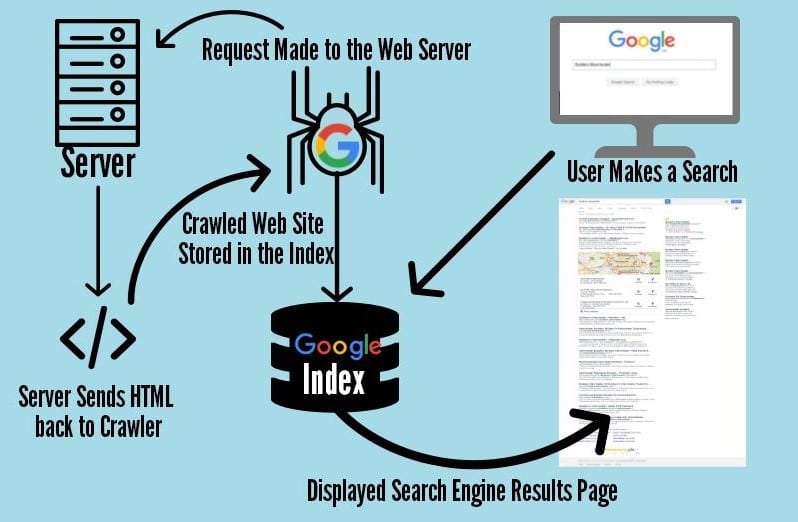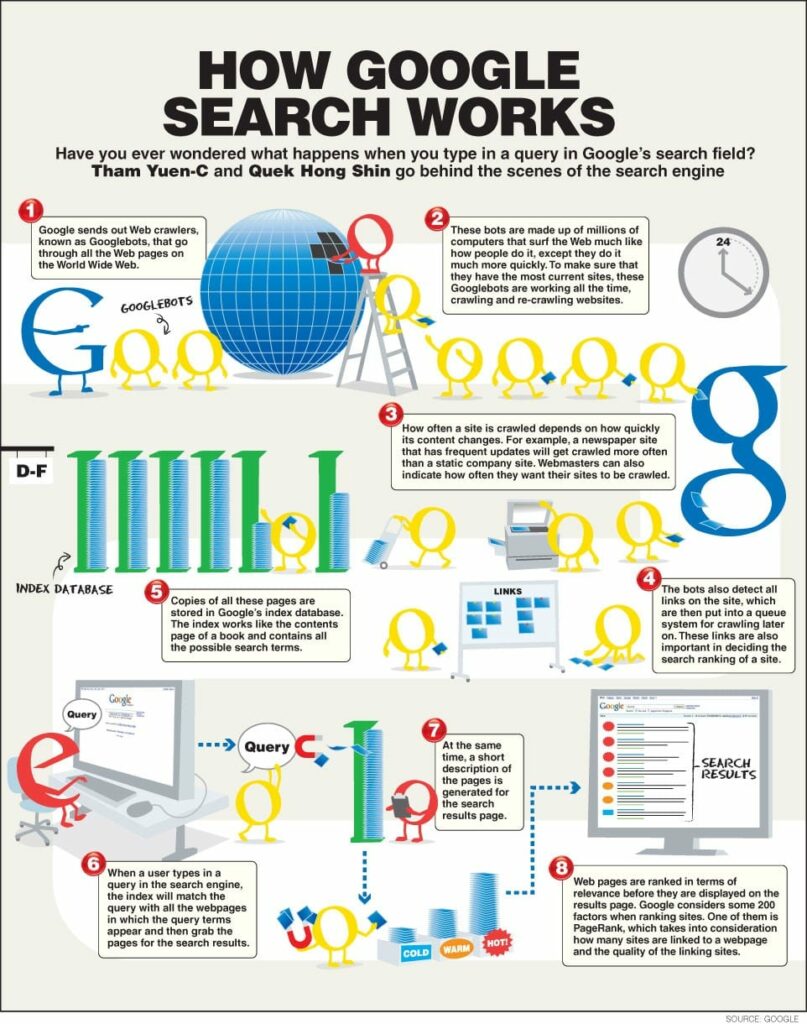Search engine optimization and online marketing offers invaluable support to website owners who are looking to enhance their online visibility for substantial returns. Web search tools have two noteworthy capacities: crawling and indexing, both concepts are a part of search engine process where the users are provided with the list of well-ranked websites on Google. This article looks at the Google’s webmaster guidelines and the concepts of crawling and indexing to help you understand the process of search engine better.
Importance of Search Engines
Search engines are the portals to billions of web pages that are available at user’s or inquirer’s request. The user or inquirer makes the request by entering the specific keywords in to the search engine to which the portal generates results according to the query.
A web crawler is any product program that scans for destinations in light of the keywords users have entered in the search engine. Web indexes are the work stations of the internet, returning billions of reactions to billions of inquiries consistently, with the real web crawlers being Google, Yahoo, Bing and Ask. The following image shows the process of how a search engine works.

Here is another infographic to help you understand how Google works:

Understanding crawling and indexing
Envision the World Wide Web as a system of interlinked frameworks with individual stops. The web indexes require an approach to “crawl” the whole framework and discover every one of the stops en route, so they utilize the best way accessible; through proper and relevant links. Links are the source for search engine crawlers to reach the billions of web pages available on the web.

Crawling and indexing refer to the processes that allow users to find the right content through search engine. These two key elements regulate the flow of content to make sure that users find what they are looking for by viewing the best possible pages available on the web. The process of crawling and indexing:
- Investigates and stores the billions of records, pages, documents, news, recordings, and media on the World Wide Web to provide accurate responses to user inquiries, through arrangements of significant pages that they’ve recovered and positioned for high rank.
- Structure the web to tie the greater part of the pages together.
- Allows the web search tools’ robotized robots, called “crawlers” or “bots” to achieve a large number of interconnected records on the web.
SEO and Google Webmaster Guidelines
In order to make sure that your website easily finds it way in Google search engine process, follow the following guidelines:
- Make pages for users, not for web indexes. Try not to beguile your users or present diverse content material to web indexes that may deceive; a practice known as web cloaking.
- Make sure that your website has an easy-to-navigate hierarchy and links.
- Make sure that your content is clear and accurate with proper title elements.
- Utilize relevant keywords to create easy-to-find URLs. Make sure to assign URL’s to reach documents within the web page. Additionally, address the duplicate content on your site by utilizing the rel=”canonical” attribute or 301 redirects.
How does popularity and relevancy impact ranking
Popularity and relevancy of the content influence the online marketing activities, especially the search engine process (crawling, indexing and ranking). Search engines primarily serve as the answering machines for users; users add their inquiry into the search engine triggering the search engine process where Google sifts through billions of web documents to find the relevant results that satisfy the popularity of a specific category. Peruse the Google’s ranking algorithm diagram below:

Based on the popularity of the web page, Google assigns rank to the web pages and portrays the higher ranked pages in the first 10 results on the search engine. For Google, popularity and relevancy are measured through hundreds of varying factors that determine whether the page accurately matches the search query or not. In simple words, the more valuable information the site has, the higher are the chances to rank well on Google.


Thanks for sharing Nice informative information in this article. You have explained by infographics is very nice and it is easy to understand.